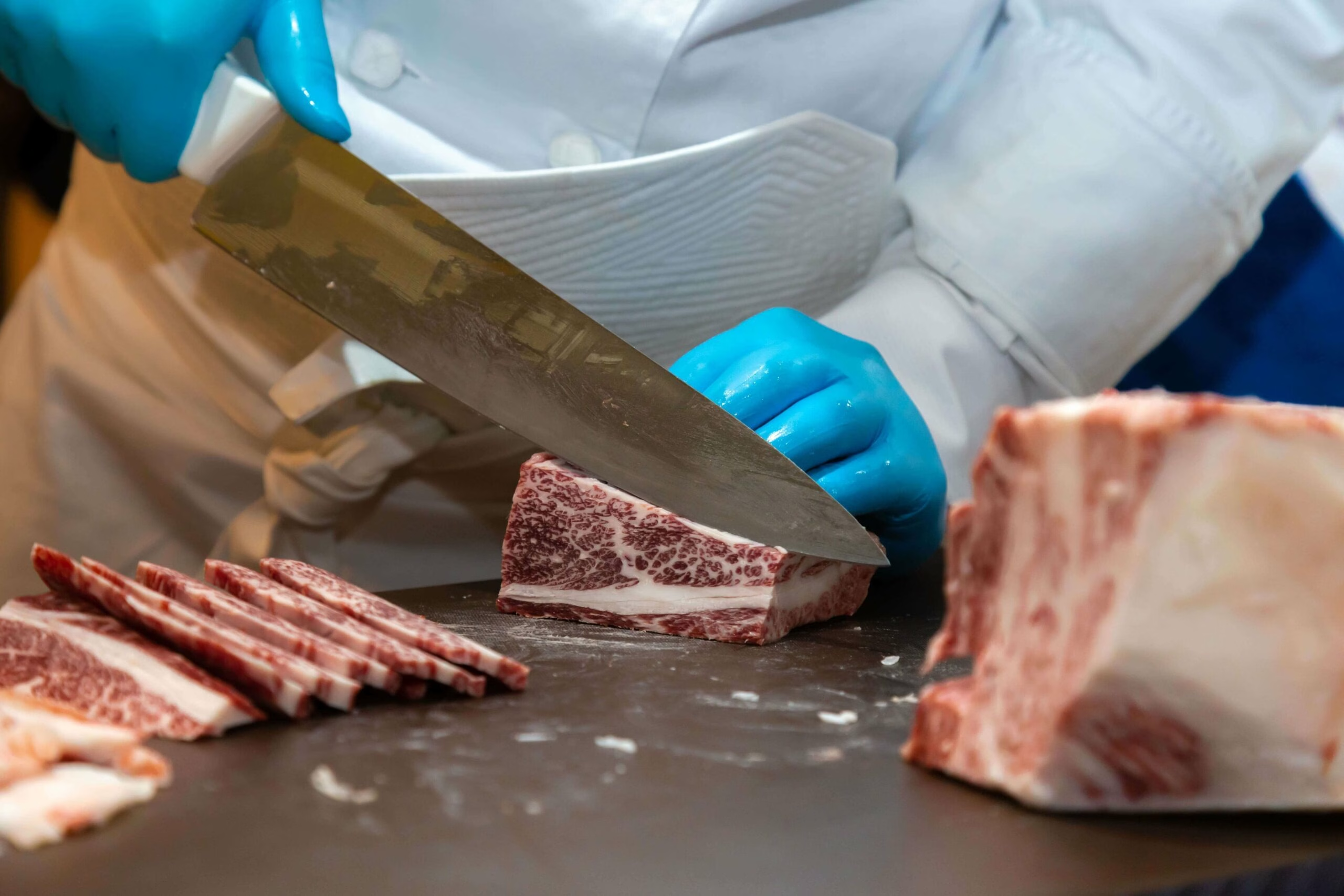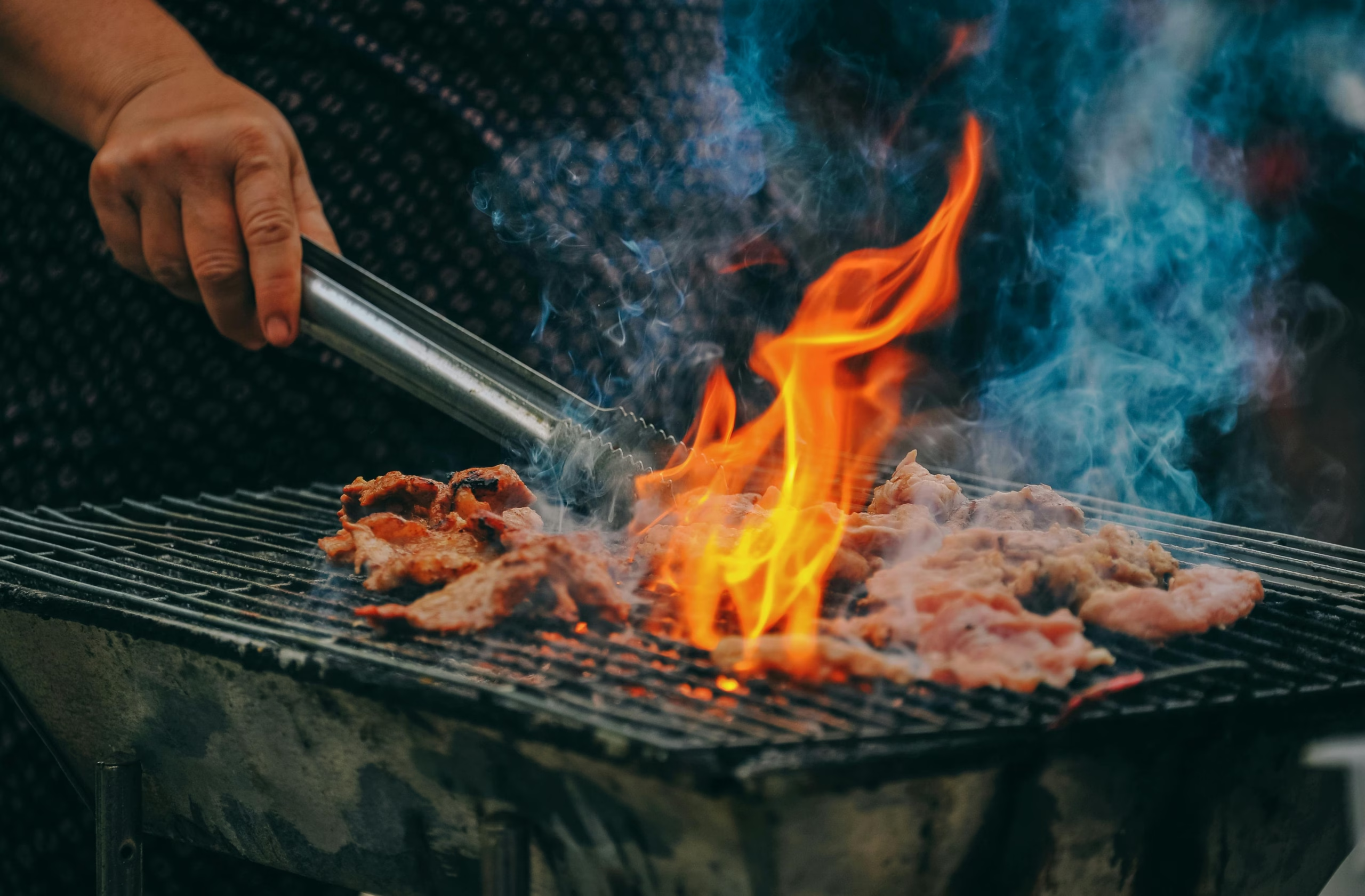You may have been to a Michelin star restaurant and seen it on the menu or have come across stores selling it online. Either way, if you have heard of Wagyu beef, you know it is considered the best around.
There is a certain prestige that people associate with Wagyu beef. But what makes Wagyu beef so special? It turns out, that its marbling might be one of the keys to what sets this premium meat apart from others.
What is Wagyu Beef Marbling?
Marbling (also referred to as Intramuscular Fat) refers to the white fat flecks in red meat and it’s what gives Wagyu its buttery texture and intense flavor. When you cook meat, the marbling melts and carries the flavor throughout the beef while maintaining its juicy and tender characteristics. Intramuscular fat is found within the muscle, unlike intermuscular fat which refers to the fat found between the muscles and is usually cut off before you start cooking.
Despite what many think, marbling doesn’t mean the meat is too fatty, rather it’s what helps supplies Wagyu with important omega-fatty acids which are essential to a healthy diet.
Due to its crucial role in meat quality and taste, marbling is one of the most important factors considered in beef grading scales in the U.S, Japan, and around the globe. Essentially, the more marbling, the higher quality the beef is. Let’s dig a little deeper into beef grading scales for Wagyu and the role marbling plays.
What is The Beef Marble Scale (BMS)?
There is no single standard for grading Wagyu beef. The Japanese Wagyu registry has a grading system based on a beef marbling scale (BMS) from 1 to 12 with 12 being the highest quality. The marbling score of Wagyu beef generally ranges from 3 to 12, where 12 represents extremely high levels of marbling. In order to have a BMS 3 grade, the beef is required to have at least 21% intramuscular fat. Trained assessors will measure the amount, distribution, and texture of the marbling, visible via the amount of fat flecks in the beef.
In this grading system, “A5” is the highest marbling score possible and represents beef with an extremely high level of marbling. However, when marketing their meat to non-Japanese consumers, some producers may label A5 meat as BMS 9, which is the marbling score range for A4-A5 in the Japanese grading system. Other producers may avoid labeling their beef at all, simply providing customers with a retail price. To complicate matters even further, a single producer may have multiple grading scales. While the different standards can be confusing for customers, it is important to note that the marbling score is still the primary factor in determining Wagyu beef quality.
The Wagyu industry has agreed that an official standard needs to be developed for international use. The American Wagyu Association (AWA) recently worked with the Japanese Wagyu Association to develop an industry grading system that is applicable internationally. The new grading system was created in 2013 using the same criteria as the current Japanese registry.
The new grading system developed by AWA and Japan Wagyu Association uses a numeric scale from 1 to 13 with 13 representing extremely high marbling levels. The graders will look at several factors when determining grade, including the amount of fat in the ribeye, the thickness of the fat, and even an overall impression of the marble pattern.
How Marble Score Affects Wagyu Quality
Wagyu beef is graded according to marbling among other factors. While there is no standard grading scale for Wagyu beef according to marbling score, most producers utilize the BMS as a standardization for providing a grade. Wagyu beef is more expensive than other types of steak due to the intensive process of raising cattle for meat, which can take up to three years before they are ready.
The marbling score is important because it affects the taste, texture, and tenderness of the meat. A high-quality marbling score means that the meat will have a better flavor and a more buttery texture. It will also be more tender and juicy than beef with a lower marbling score.
There are other factors that contribute to a quality beef product, including age and breed of the cow, feed composition, and post-slaughter aging. However, the marbling score is the primary factor in determining Wagyu beef quality. In general, the greater the percentage of intramuscular fat, the higher quality and thus more expensive (and tender) the beef is.
Why is Wagyu So Marbled?
The reason for Wagyu beef’s high-quality marbling is its genetics. The cattle are bred to produce a higher percentage of intramuscular fat (IMF), which makes the meat tender and flavorful. Wagyu cattle are bred to produce more intramuscular fat, which gives the meat its buttery texture and intense flavor.
Marbling is also more difficult to judge when it comes to Wagyu beef, as fat is opaque and isn’t as easy to see through the meat. In a standard steak, you can expect to find the fat cap on its outside. However, with Wagyu, the cow metabolizes the fat internally meaning most of the marbling present in Wagyu beef is located within the muscle tissue rather than on top of or between muscles. This also means that you cannot use the “finger test” – sticking your finger into the cut of meat to determine its tenderness – on Wagyu beef.
The Wagyu cows’ genetics are what make their meat so high-quality! If you haven’t tried Wagyu beef yourself, make sure to give it a taste test the next time you go out to eat or you can even buy some from the comfort of your home from a premium online store like Holy Wagyu. You won’t regret giving this delicacy a taste!
Variations of Marbling
There are different variations of marbleization in steaks. For example, the cuts that are most marbled come from the loin. This is because these are the muscles less often used, meaning more fat. There are also marbled cuts that come from the legs, rump, and shoulder areas. Different breeds, ages, and the diets of individual herds will dictate how much marbling the beef has.
There are some cattle breeds known to have more marbling than others. Japanese Wagyu is known to have the most, which leads to extreme marbling. However, American Wagyu Beef is also extremely marbled. Both are filled with nutrients such as omega 3 and 6 fatty acids and offer a wide range of other health benefits.
Why You Should Try Wagyu Beef
There are a number of reasons why you should try Wagyu beef.
- Firstly, Wagyu beef has a much better flavor than other types of beef. The high-quality marbling gives the meat an intense flavor that is sure to please your taste buds.
- Secondly, Wagyu beef has a more buttery texture than other types of beef. The marbling score affects the tenderness and juiciness of the meat, so Wagyu beef is sure to be tender and juicy every time you eat it.
- Finally, Wagyu beef is considered to be some of the best beef in the world. If you are looking for a truly exceptional dining experience, then you should definitely try Wagyu beef.
Deciding Which is Right for You
Choosing the right cut of Wagyu is a matter of personal preference. Some people prefer to have the highest marbling grade of Wagyu for an extremely buttery flavor, while others prefer to have less marbling. It can be fun to compare cuts of Wagyu and find out what you like best but one thing is for sure; you can’t go wrong with Wagyu beef.
If you are ready to treat your taste buds and discover what makes Wagyu superior to other cuts of meat; Holy Wagyu has a wide selection of top quality American Wagyu products to choose from. As a unique kosher wagyu meat supplier; we are committed to the humane raising of our cattle to ensure the highest standards and give you the highest quality meat delivered right to your door.


